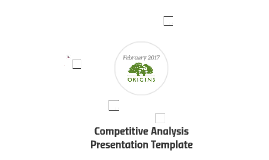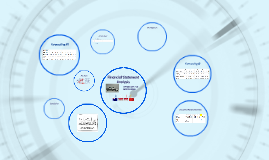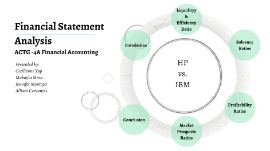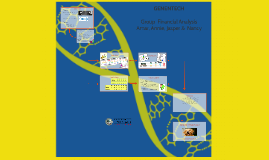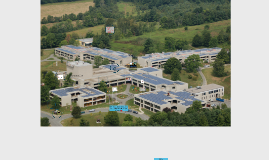Financial Analysis Presentation
Transcript: Solar Array Specifics Presented By: ROI Presented to you by: Moody Street V(PW)=Variance Present Worth V(PW)=E(PW)2-[E(PW)]2 V(PW)= $11,671,996,158,377,600,000.00-[$4,740,888.73]2 V(PW)= $749,924,085,141,806,000.00 SD(PW)=Standard Deviation Present Worth SD(PW)=√[V(PW)] SD(PW)=√[ $11,671,996,158,377,600,000.00] SD(PW)= $865,981,573.21 Scenario 2 What are the Expected Present Worth (E(PW)), Variance Present Worth (V(PW)) and Standard Deviation (SD(PW)) associated with the purchase of the equipment? Timothy Hayes We looked at 3 scenarios Scott Richards Westin Moody Street What is the ROI, IRR, Risk, Replacement Analysis of the Solar array at Berkshire Community College? Glenn Abriam Replacement Analysis Questions? IRR -$797,137 -$740,201 -$678,003 -$615,240 -$549,835 -$481,766 -$411,010 -$337,843 -$271,942 -$193,283 -$111,840 -$155,560 $183,292 $530,039 $884,809 $1,237,733 $1,608,927 $2,031,657 $2,461,424 $2,898,369 $3,342,636 8% Technology advancement analysis Replace existing array after 10 years Replace with 1000 Watt panels Assume salvage value Assume same cost as original panels Statewide CC Marketing initiative Conclusion Analyze existing array Campus cost only CREB 20 lifetime No replacement panels Glenn Abriam Scenario 3 • Radio, TV, Pandora & Hulu • 21 million impressions at the end of the campaign • Video production company that created SNHUs commercials • Aimed at working adults ages 25-49 looking to make a career change • If funds are available, MCCEO could run the campaign during summer (September enrollments). • MECCO considering billboards for the future Ashley Boyd The useful life of the replacement solar array is uncertain, so the present worth (PW) of the new solar array for different useful lives (N) is calculated as: Total Capital Invested = Total Capital Costs - Total Salvage Costs + Total O&M Costs - Total CREB until break even point (FY23=$914,028) Total Capital Invested = $1,307,940 - $187,400 + $124,200 - $914,028 Total Capital Invested = $330,712 Savings/Year = (See Table) MARR = 20% Evaluation of a Replacement Solar Array Project Life as a Random Variable Presented by ROI is used to evaluate the efficiency of an investment. The Return on Investment formula: (Gains from Investment-Cost of Investment) / Cost of Investment For our Project: Revenue CREC + Solar Savings-Operations & Maintenance-Principle& Interest / Investment ROI after 20 Years Revenue CREC + Solar Savings - O & M - P & I - Investment / Investment $1,523,380+$1,326,838-$124,200-$965,556-1,800,000 / 1,800,000 ROI(1)=-2.2% ROI(2)=136% ROI(3)=298% PW(N)=Capital Investment + Savings (P/A,i%,N) PW(N)=-$330,712+$[SavingsN](P/A,20%,N) PW(12)=-$ 330,712+$312,442(P/A,20%,15) PW(12)=-$ 330,712+$312,442 (4.4392) PW(12)= $1,717,705 PW(13)=-$ 330,712+$318,691(P/A,20%,15) PW(13)=-$ 330,712+$318,691(4.5327) PW(13)= $1,775,243 With the original installed cost of the replacement solar array being $1.8 million, less the Salvage Costs O&M Costs and the CREB credits and a total capital investment of $330,712; the expected present worth value of the solar array after 21 years of life is a positive value of $4,740,888.73 With SD(PW)= $865,981,573.21, approximately 444.7 times the value of E(PW), this indicates a relatively high variability in the measure of economic merit, PW of the project, and is usually an unaffordability of project acceptability. IRR Scenario 3 http://live.deckmonitoring.com/?id=berkshire_overview MSFM - Massachusetts Maritime Academy Financial Analysis for Facility Managers Professor Lehan Ashley Boyd Moody Street Analyze existing array $1.8 million ARRA Funds CREB 20 year lifetime No replacement panels E(PW)= $4,740,888.73 V(PW)=$210,092,944,515,310.00 SD(PW)= $865,981,573.21 SD(PW)>E(PW) $865,981,573.21>$4,740,888.73 444.7 times the value of E(PW) Scenario 1 For our Project: Revenue CREB + Solar Savings- Operations & Maintenance-Principle& Interest/ -Investment E(PW)=Expected Present Worth E(PW)= PW(12) p(12)+ PW(13) p(13)+ PW(14) p(14)+ PW(15) p(15)+ PW(16) p(16)+ PW(17) p(17)+ PW(18) p(18)+ PW(19) p(19)+ PW(20) p(20)+ PW(21) p(21) E(PW)= $1,947,481.49 E(PW)2=[PW(12)]2 p(12)+ [PW(13)]2 p(13)+ [PW(14)]2 p(15)+ [PW(14)]2 p(15)+ [PW(16)]2 p(16)+ [PW(17)]2 p(17)+ [PW(18)]2 p(18)+ [PW(19)]2 p(19)+ [PW(20)]2 p(20)+ [PW(21)]2 p(21) E(PW)2=$749,927,877,825,946,000.00 1874 Panels 7 Buildings 210 Watts / panel 20% - 25% of total campus 400,000 kWh 20 year lifetime Challenges







